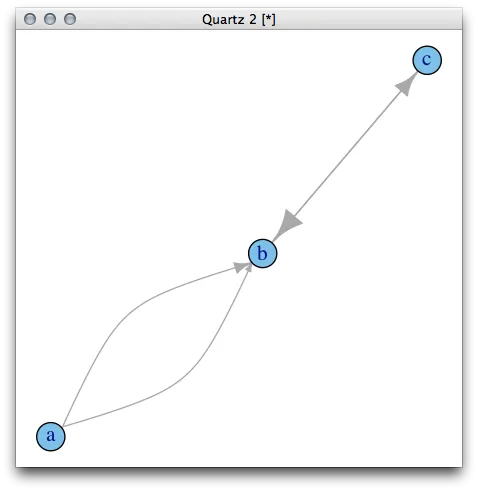尽管手册说明这将是一个未来的功能:
箭头大小。目前这是一个常数,因此对于每个边缘都是相同的。如果提交了一个向量,则仅使用第一个元素,即如果这是从边缘属性中获取的,则仅使用第一个边缘的属性用于所有箭头。这在将来可能会改变。
默认值为1。
我想知道是否有一种方法可以绕过,使箭头大小与边缘宽度匹配(每个边缘都有自己的宽度)。
箭头大小。目前这是一个常数,因此对于每个边缘都是相同的。如果提交了一个向量,则仅使用第一个元素,即如果这是从边缘属性中获取的,则仅使用第一个边缘的属性用于所有箭头。这在将来可能会改变。
默认值为1。
我想知道是否有一种方法可以绕过,使箭头大小与边缘宽度匹配(每个边缘都有自己的宽度)。
d <- data.frame(start=c("a","a","b","c"),end=c("b","b","c","b"), size=rnorm(4))
graph <- graph.data.frame(d, directed=T)
plot(graph,
vertex.color="white",
edge.width=E(graph)$size*20,
edge.arrow.size=E(graph)$size)

